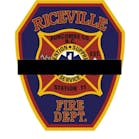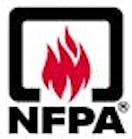VA Firefighter Survived Cancer, Now She's Battling Rare Disease
By By Mike Connors
Source The Virginian-Pilot
Jul. 19--CHESAPEAKE Lisa Brandt started this year feeling great, certainly not envisioning that she was about to begin another life-altering battle. The veteran city firefighter had already beaten cancer. She'd worked herself back into top shape thanks to CrossFit, a high-intensity fitness regimen.
So when Brandt, 52, found herself getting easily worn out a few weeks into the calendar, she didn't worry too much. Aging stinks, she thought. Brandt kept going for check-ups, a requirement after her bout with colon cancer. Nothing jumped out on any test results.
But as exercise became more exhausting and carrying firefighting gear wiped her out, she realized something was wrong.
Last month, the reason sideswiped Brandt. She had paroxysmal nocturnal hemoglobinuria, or PNH, which impacts about 1 in 1 million people. It's so rare that only about 400 cases are diagnosed in the United States each year.
Her condition was made worse by aplastic anemia, another rare disorder. Caused by a gene mutation, PNH destroys red blood cells and creates blood clots.
The median survival after diagnosis is 10 years, according to The Johns Hopkins University health system.
The only cure for PNH is a bone marrow transplant.
As Brandt struggled to absorb the shock, she received more crushing news. A bone marrow donor registry with about 14 million people had no matches for her.
"It's a little hard to swallow," she said during a recent interview. "For anyone."
Brandt has devoted her life to public service. She's been a firefighter for 18 years. Before that she was a police officer and an Air Force reservist.
She also is a woman of faith.
She believes in God and trusts that Jesus Christ is her savior. After her diagnosis, she turned upward as she wondered why she was dealt this blow. What she found was a calling, to increase the number of bone marrow donors herself.
"This goes way beyond me," Brandt said. "This goes for everybody out there like me. It's a cause that needs to be presented."
Even with this mission and her faith, Brandt has down days. She calls firefighting the best job in the world, so being relegated to desk work because of her health is driving her crazy.
She recalls breaking down one night shortly after her diagnosis. Reading through paperwork and gathering questions for doctors was overwhelming.
Still, those close to Brandt are not surprised by how she's attacking her crisis.
Nicole Brandt is Lisa's younger sister and only sibling. They're also roommates. Their mother died in 2016 -- the same year Lisa was diagnosed with stage 2 cancer. She stayed positive through both ordeals, Nicole said.
Lisa became a firefighter to help others, her sister said. This disease lets her help in a new way.
"It's not about Lisa now," Nicole Brandt said. "It's about others and getting the word out."
Drew Kastelic is helping with that cause. An owner at CrossFit Unrivaled in Chesapeake, he met Brandt when she joined his gym about five years ago.
Brandt now coaches children at the gym. She and Kastelic have become such good friends that his 3-year-old daughter knows her as "Auntie Lisa."
The day Brandt gave him her bad news, he went online and researched the disease and bone marrow transplants. He wrote to Be The Match and requested an event to raise awareness.
Be The Match is a nonprofit organization operated by the National Marrow Donor Program. It manages the world's largest marrow registry. Brandt's event will be from noon until 6 p.m. Thursday at Chesapeake City Park, on City Park Drive near Greenbrier Parkway. Attendees will be able to join the registry.
Originally, Brandt sought a donor for herself, Kastelic said. Naturally. But now: "The more the better," he said.
It's easy to become a donor, said Amy Schatz, a representative for Be The Match.
Anyone who registers online and meets health and age qualifications -- 18 to 44 is the sought-after range though some donors are older -- will get a free kit in the mail. A cheek swab will collect DNA.
Years could pass before a person is asked to donate, and it might not happen at all. Donors give either marrow or, most often, peripheral blood stem cells. That process involves drawing blood from an arm and collecting healthy cells for the patient.
Minority donors are especially needed. While white people -- like Brandt -- have a 77% chance of finding a hit on the registry, the likelihood for Asians and Hispanics is less than 50%. Blacks have just a 23% chance.
Of everyone in the registry, only 4% are African American, Schatz said.
A few days ago, Brandt began taking Soliris, which is the only medical therapy for PNH approved by the U.S. Food and Drug Administration.
It's no cure but it can improve the quality of life for patients. She's staying optimistic.
Short term, she desperately wants to go back to active duties for the fire department. Long term, she has talked about traveling with Nicole to the Grand Canyon in a few years when she retires.
"I still plan on that with her," Brandt said.
A new donor could be match for Brandt, but it's sort of like playing the lottery, she said.
She has won scratch-off games before. But there are no guarantees.
___ (c)2019 The Virginian-Pilot (Norfolk, Va.)
Visit The Virginian-Pilot (Norfolk, Va.) at pilotonline.com
Distributed by Tribune Content Agency, LLC.






